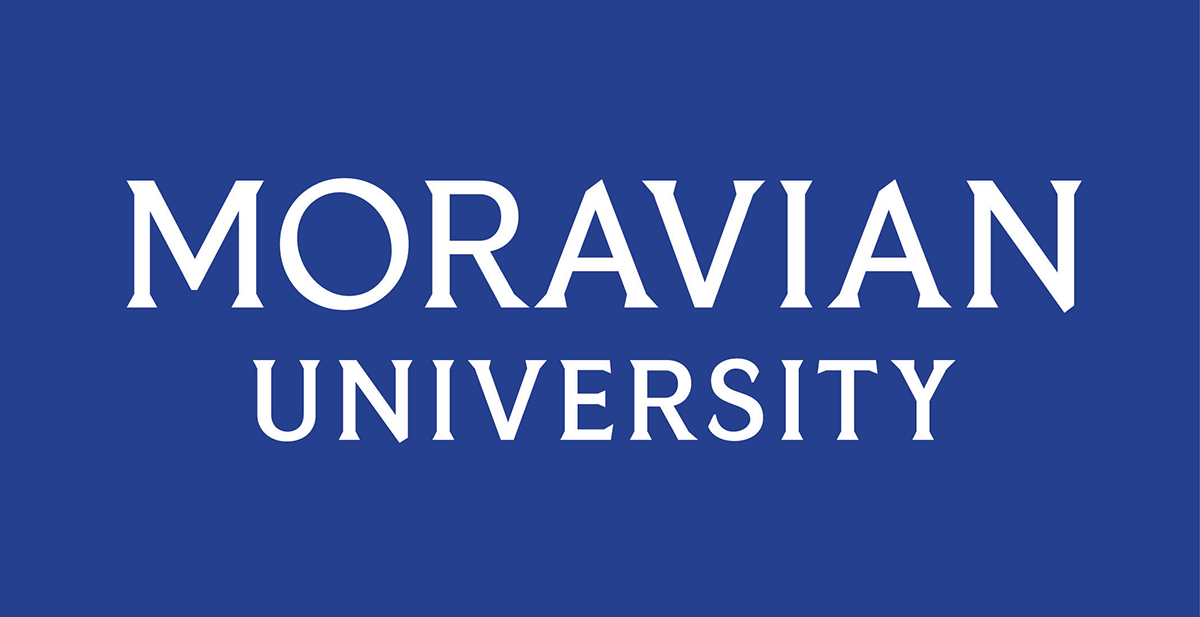
Innovation and the pursuit of excellence brought Moravian College to this moment.
By Claire Kowalchik
“It was Hank Barnette’s idea,” says President Bryon L. Grigsby ’90, P’22 of the decision to elevate Moravian College to Moravian University. “I was against it.”
Barnette is a member of the board of trustees. At meeting after meeting, he would say to Grigsby, “We need to change the name to university.”
“And I would reply, ‘Geez, Hank! The College of William & Mary doesn’t have to be the University of William & Mary!’” says Grigsby.
On a late-September day in 2020, consultant Anne Steele, a former president of Muskingum University, was at Moravian for a meeting to discuss the faculty handbook. At the end of the meeting, she kept Grigsby back. “I want to talk with you about why you are not a university.”
Steele listed the benefits:
- Students will get better jobs because they are at a place that is perceived to have more resources.
- It will be easier to recruit international students who consider colleges a lower level of education than a university.
- Faculty will have an easier time getting research grants.
- Students prefer universities because they have more resources.
- It is more prestigious for your alumni.
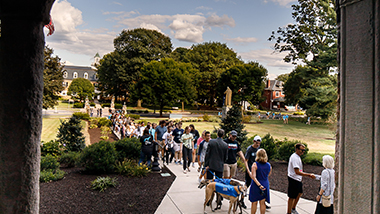
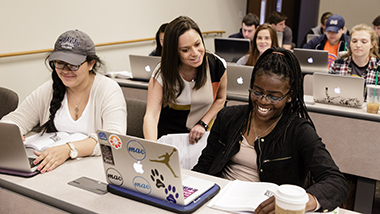
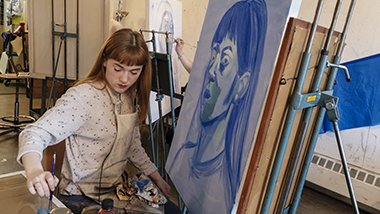
“Why are you holding out on moving to university status?” Steele asked. “Who are you doing this for?” Grigsby admitted that he was doing it for himself. Because his beloved alma mater is Moravian College.
“It was not a good evening as I reflected on that,” says Grigsby. “I am charged with doing what’s best for the institution.”
At about the same time, Ken Rampolla ’79, chairman of the joint and college boards of Moravian, had decided to retire, and Grigsby saw an opportune moment to address another significant change—the move to university. “I told him I was on board and asked if he would present it at the next meeting instead of me waiting until my retirement,” says Grigsby. “Because that was my plan—to change it to university as I walked out the door.”
Rampolla agreed. The board of trustees voted in favor of the move. And Hank Barnette smiled.
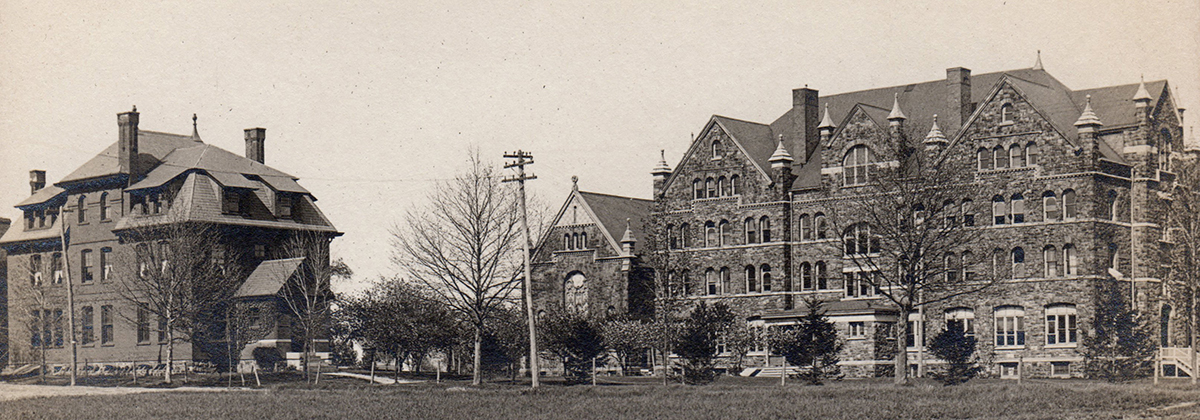
Comenius Hall and the refectory (1892)
Moving Forward Since 1742
Moravian College and Moravian Theological Seminary have never accepted the status quo. Ours is a history of looking forward and moving forward to what is best for our students and for the communities they will serve.
That ethos dates back to our origins in 1742 when the Moravians opened not only a school for boys in Bethlehem but the first school in Colonial America for girls, the Moravian Seminary for Young Ladies. The Moravians saw the importance of educating girls because women are the first teachers of children, and because an education would prepare women to be successful outside the home. Girls were taught the same subjects as boys, including languages, history, geography, science, and mathematics.
From 1742 on, the Moravian Church continued to build on this foundation, opening its doors to a diverse population, expanding course offerings as students looked to prepare for an increasing number of professions, reshaping the institutions to meet the current and projected needs of society, and implementing new technology as it became available.
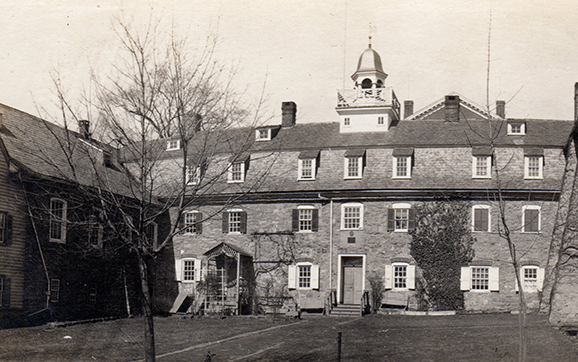
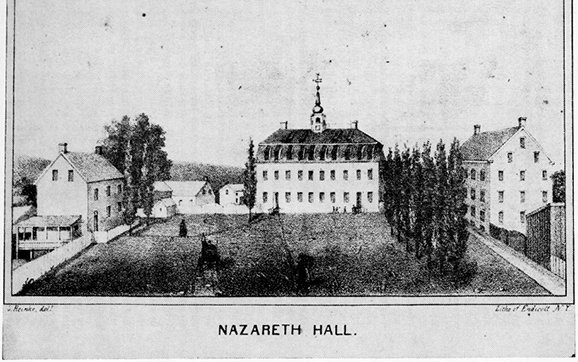
(Left) The first building to house the female seminary in Bethlehem; (Right) Nazareth Hall
1785: Welcoming All
During the American Revolution, as the excellent reputation of the girls’ school spread, requests came to the Moravian Church to open the school to the public. In 1785, the Moravian Seminary for Young Ladies welcomed students from outside the church and became the first boarding school for young women. Its reputation attracted the grandnieces of George Washington and Thomas Jefferson.
1807: Building a Seminary
In Nazareth, where a second boys’ school—Nazareth Hall—had been opened in 1743, the Moravian Theological Seminary was forming. It separated from the boys’ school and was officially established in 1807.
1807–1907: Growing Academic Programs
Some of the young men who entered the seminary changed their minds about going into the ministry, so Moravian responded with a broader variety of courses, leading to several different careers. In his address at the centennial celebration, Rev. Paul de Schweinitz, Class of 1886 and a treasurer of Moravian College and Theological Seminary, remarked, “We find among our alumni, teachers, professors, lawyers, physicians, dentists, journalists, government employees and a large number of businessmen.”
1858–1863: Establishing a College
In 1858, the seminary moved from Nazareth to Bethlehem and expanded to offer a full and separate college curriculum, changing its name to Moravian College and Theological Seminary. The college was the church’s gift to the secular world. In 1863, both the men’s college and the Moravian Seminary for Young Ladies were chartered by the state of Pennsylvania to offer baccalaureate degrees. The women’s school was reorganized in 1913 as Moravian Seminary and College for Women.
1888: Growing a Campus
The Moravian College and Theological Seminary needed new facilities and space to grow. Church-owned land in the northwestern part of Bethlehem was allocated for a campus, and the cornerstone of the main building—Comenius Hall—was laid in the spring of 1891. This move allowed the expansion of the college that continues today.
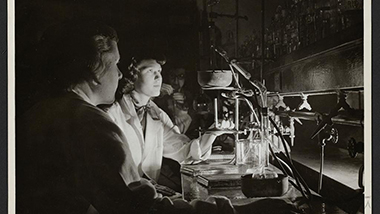
1950s women’s biology lab
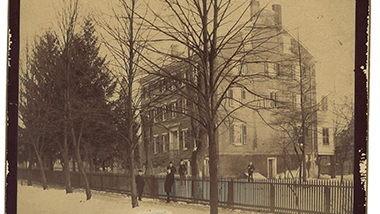
Moravian Theological Seminary on Church Street
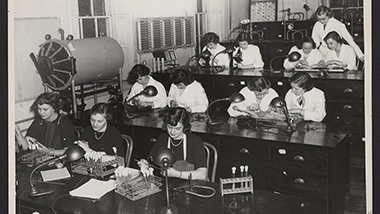
1950s women’s chem lab
1954: Going Coeducational
In 1954, the women’s college was on the verge of financial ruin, so the administration decided to merge the women’s and men’s institutions to form the first coeducational institution of higher education in the Lehigh Valley. “It was a bold move at a time when co-education was still very controversial,” says Craig Atwood, the Charles D. Couch Chair of Moravian Theology at the seminary. That boldness paid off. Moravian College and Theological Seminary saw financial savings, an increase in academic offerings, and better morale among faculty and students. “The second half of the 1950s and most of the 1960s was a golden era for the collegiate world,” writes John R. Weinlick in his book Twentieth Century Moravian College—Challenge and Response. “Coeducation at an early stage was one of the keys to Moravian’s success in being able to capitalize on the opportunities of those years.”
2015: Expanding Graduate Programs
Recognizing an opportunity for growth through graduate programming, President Grigsby pushed for expansion, and seeing the country’s rising need for health professionals, he brought health sciences to the forefront. In the spring of 2016, Moravian’s Sports Medicine and Rehabilitation Center opened, and in the summer, students were accepted into our master of science in athletic training program. Today, Moravian also offers master’s degrees in occupational therapy and speech-language pathology, doctoral programs in athletic training and physical therapy, and a dual doctor of athletic training/master of business administration degree. With additional growth across academic disciplines, the graduate program today provides more than 45 doctoral and master’s degrees and certification options, and our graduate and adult student population has grown from 236 in 2015 to 394 as of March 31, 2021.
“I am charged with doing what’s best for the institution.” —President Bryon L. Grigsby '90, P'22
2021: Becoming a University
In May of this year, Moravian College received approval from the Pennsylvania Department of Education to operate as a university. Moravian University provides a comprehensive undergraduate education, while offering opportunities in pre-professional programs and graduate studies. “It represents the movement of many lifetimes,” points out Ben Feller, narrative strategist on the team that has helped shape our new identity. “So many generations have contributed to Moravian College becoming a university.”
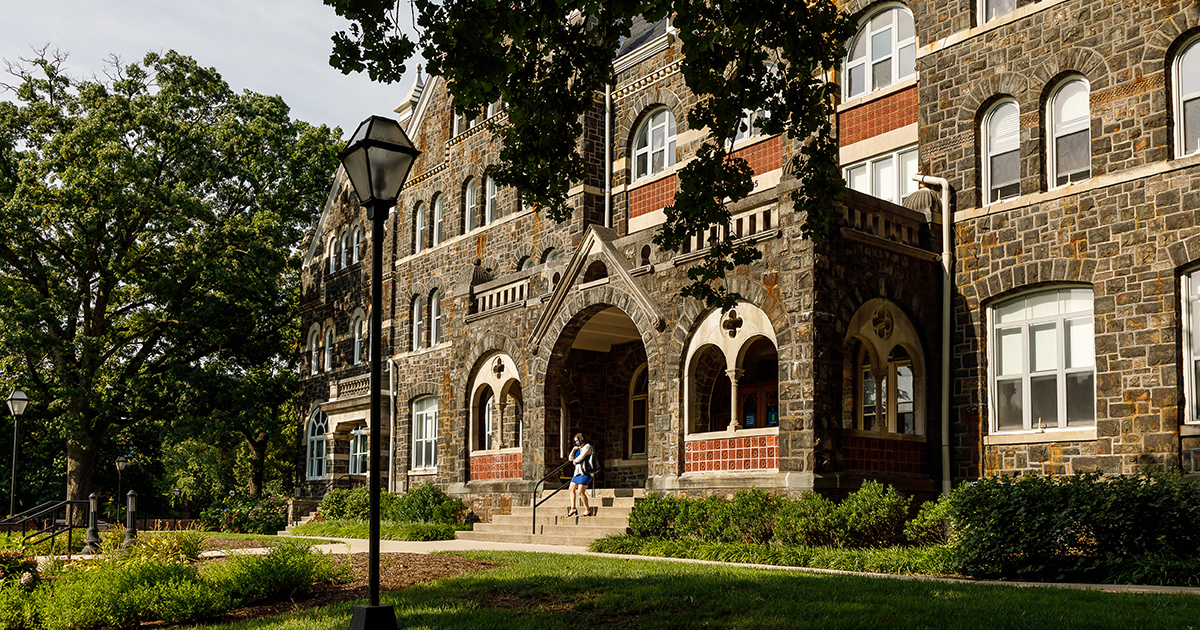
Moravian University provides a comprehensive undergraduate education, while offering opportunities in pre-professional programs and graduate studies.
Staying True to Who We Are
“Lots of things have changed over the years,” Grigsby acknowledges. “Here’s what’s not changing—we’re not changing who we are.”
Who we are has its origins in the Moravian Church, which believes that love and relationship are at the core of who we are and how we live in the world. That ethos is in our institution’s DNA and has expressed itself in many ways throughout our history.
We Are a Sister to the Seminary
The Moravian Theological Seminary carries on its mission of preparing men and women for Christian ministry and spiritual counseling with an expansive academic platform. The seminary offers five master’s degrees, four dual degrees, and three certificate programs.
We Are Grounded in the Liberal Arts
A well-rounded education is as important today as it was in 1742. Moravian University continues to require coursework in the humanities, sciences, and social sciences, recognizing that this foundational knowledge supports excellence in all endeavors.
We Are Committed to an Education That Is Personal
Writing about the history of the college and seminary in 1910, Rev. William Nathaniel Schwarze, a professor of church history, attributes the high quality of learning to “the richness of the character and earnestness of service of the teaching staff.”
Today, our faculty members are as passionate about teaching as they are about scholarship. Ask alumni to name a favorite professor, and you will hear glowing remembrances of dedicated and inspired faculty, including Daniel Gilbert in history, Jack Ramsey in theater, Frank Kuserk in biology, Bob Burcaw in English, and Dick and Monica Schantz in music, among many others. Moravian faculty get to know their students, and they always make time to meet one-on-one.
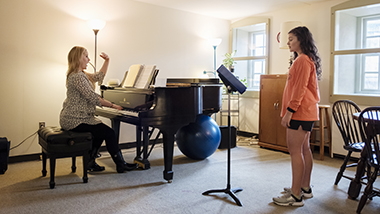
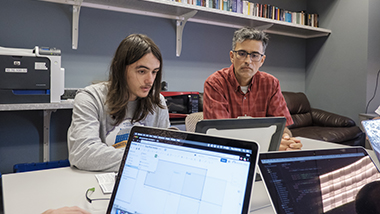
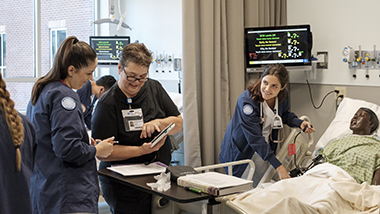
We Provide Education for All
Moravians have always opposed discrimination based on religious belief, ethnic origin, sex, wealth, or social standing. Native Americans and Africans were welcomed into Moravian congregations when other churches turned them away, and poor children could attend the girls’ and boys’ schools for free. Likewise, Moravian University welcomes all students, regardless of faith, ethnicity, sex, gender preference, or social standing. And for students and families for whom a college education seems financially out of reach, financial aid makes a Moravian University education possible.
We Serve the Greater Community
Moravians have always been committed to the service of others, and we celebrate that important piece of our history on Heritage Day, which is held every year in September. On that day, students, faculty, and staff work on or off campus in service to one of our 40-plus community partners. Throughout the academic year, the Center for Career and Civic Engagement supports many volunteer opportunities locally and abroad.
We Are Early Adopters of Technology
Moravians were pioneers of technology. In 1754, they engineered the first waterworks in America, using a mechanical system that pumped water for public use from a spring near the Monocacy Creek uphill to a water tower, from which it was distributed to several cisterns. Today, we bring the latest technology to campus. In 2013, we began supplying every incoming freshman with a MacBook Pro and iPad, providing equal access to technology for all students. As an all-Apple campus that implements creative ways of using technology in the classroom, we received recognition as an Apple Distinguished School in 2018. And in the summer of 2020, in response to the shutdown of traditional classroom education, we invested in the latest online tools for creating the best possible remote learning experience for our students.
“So many generations have contributed to Moravian College becoming a University.”
We Are a Welcoming and Close-Knit Community
When the Moravians settled in Bethlehem, they established a community in which everyone contributed to fulfill the needs of the whole. Every family had food, clothing, a comfortable place to live, healthcare, and access to an excellent education. It all goes back to that central belief in relationship and love. Today at Moravian University, you can’t walk across campus without getting, at the very least, a smile from several people you know, and we lift each other up as needed. This is why so many students call Moravian home.
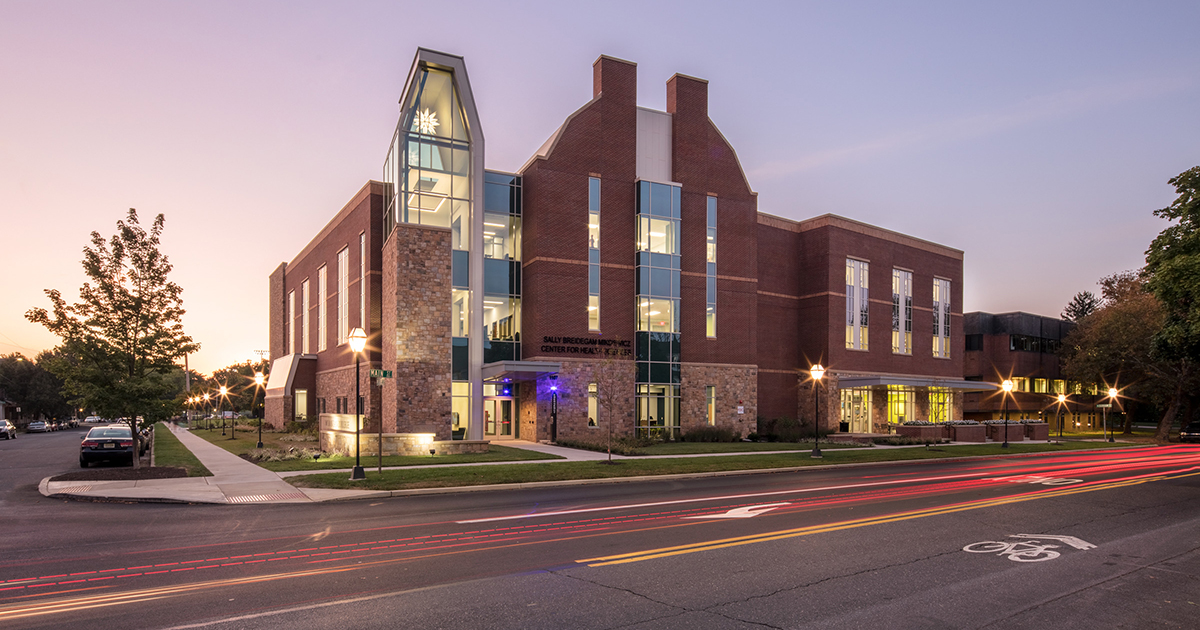
Opened in 2017, the Sally Breidegam Miksiewicz Center for Health Sciences houses our top-ranked nursing department and several science labs.
Telling Our Story Today
With approval to operate as a university, we needed to create that new identity: We needed to develop a new logo and to re-examine the way we were telling our story, both in words and visual elements. To accomplish that, we hired Pentagram, one of the world’s leading design studios, which has extensive experience working with colleges and universities. The Pentagram team we worked with was headed by Luke Hayman, a partner at the studio, and Ben Feller, narrative strategist and a partner at the Mercury communications firm. Their first step was a deep look into the history, heart, and soul of our institution.
They studied texts on the history of Moravian College, pored over freshly conducted research into our position among competitors, and consumed our new strategic plan. The team visited and toured campus and conducted multiple interviews with students, faculty, staff, alumni, and the college’s leadership. They met with archivist Cory Dieterly to examine old texts and learn about key historical events and Moravian-specific symbols like the Moravian star. “It’s a jewel of a campus,” says Hayman. “There’s a genuine niceness,” adds Feller, “and you can’t fake genuine.”
“It’s a jewel of a campus.”
At the end of their visit, the team went back to their offices in New York and made a list of our attributes, which included the terms bold, personal dedication, distinctive, transformative, inclusive, the gravitas of history, always adapting with purpose. And with these attributes top of mind, they pressed into the design work. They reviewed typefaces, considered colors, and illustrated our enduring icons.
“Moravian has what every institution wants,” says Feller, “genuine distinctiveness, a nearly 280-year history—that’s incredible! Our job was to figure out how to celebrate that history and make it current and relevant to the community today.” Adds Hayman, “Moravian is built on the values of its founders, and those values resonate now more than ever.”
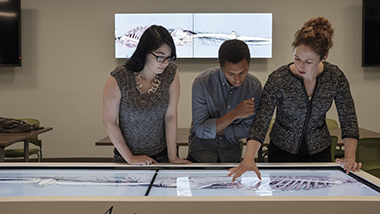
Moravian has the only virtual cadaver lab in the region.
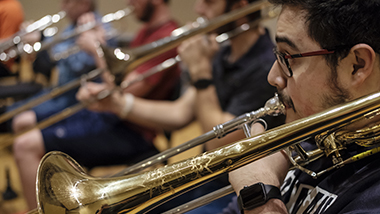
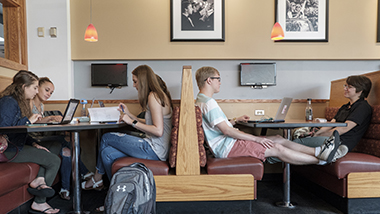
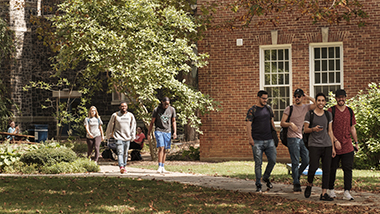
Moravian's campus is among the most welcoming in the country.
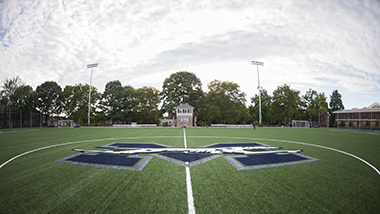
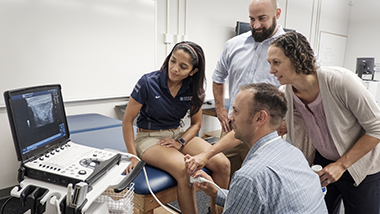
The Word Mark
To develop the Moravian University word mark, the Pentagram team first reviewed our institution’s typography dating back to our earliest years. They also looked at old German and Czech typefaces reflective of the European roots of the Moravian Church. “But we didn’t want the type to be so historical that it wouldn’t resonate with a contemporary audience,” says Hayman. They searched for something that would bridge the 18th and the 21st centuries and speak to the character of Moravian University. “There may be subtle distinctions between typefaces,” says Hayman, “but each typeface has its own voice.”

The team examined nearly 100 typefaces and presented us with two very strong options. After much debate and deliberation, we chose Bianco. “It echoes European typefaces but is more robust,” explains Hayman. “Moravian is beautiful, but it’s also part of Bethlehem and Bethlehem Steel and their regeneration.”
The Color Palette
The character of a college or university also comes through its colors. Blue and grey have been our college colors since 1894 and, as the story goes, were chosen to symbolize unity of the North and South after the Civil War. Secondary colors are used to add interest to informational and marketing materials in print and online. After reviewing the Moravian College color palette, Pentagram deemed it too soft.
“The move from college to university is momentous,” says Hayman. “We wanted to create a sense of stature; a bolder, more forthright look; a little more clarity and confidence.”
Beginning with blue, the Pentagram team looked at several shades, including those of competing institutions. They sought out contemporary uses of blue. And they delivered a hue that retains the depth and richness of our dark Moravian blue but is brighter, bolder, and more energetic. It seems almost as if it is illuminated from within. The team paired that blue with a cool grey for clear contrast when used together. The secondary colors they chose, which will be used minimally to add interest to a piece, are brighter and richer than our previous palette.
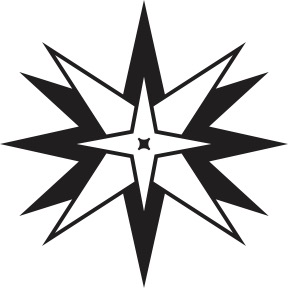
The Star, Our Most Enduring Icon
The Moravian star originated from an exercise in geometry assigned to students in the Moravian boarding schools in Germany during the 19th century. It was adopted by the Moravian Church as a symbol of promise, fulfillment, and hope and “a reminder of the light that is the life of humanity,” says the church.
Capturing the Moravian star as a two-dimensional icon was essential. Pentagram designers started with a three-dimensional model, viewing it on their computers and spinning it to look at it from different angles. They made accurate drawings of its geometry and explored several ways of rendering that geometry before presenting a final version of the star.
The importance of the Moravian Star to our identity lies also in its clear connection to our motto, Via lucis (“Way of Light”). Education is the way of light, leading to knowledge, critical thinking, creativity, and problem-solving. At Moravian, the way of light is also the way to self-discovery and transformation. “Most institutions of higher education talk about how their students have been transformed by the end of their journey.
At Moravian it happens in real time,” says Feller. “Students become part of the Moravian story with their own story.”
They discover their brilliance, as our alumni have before them.
